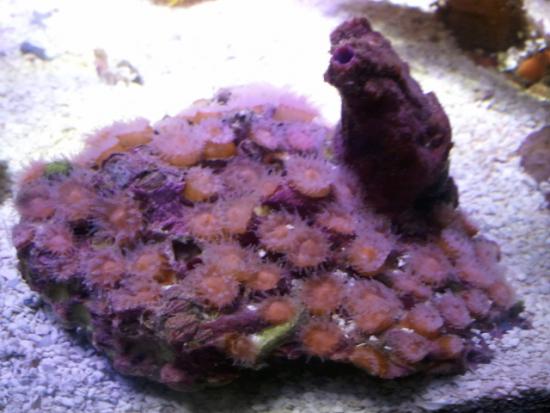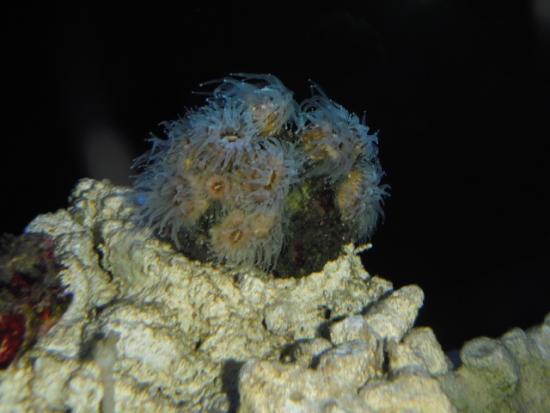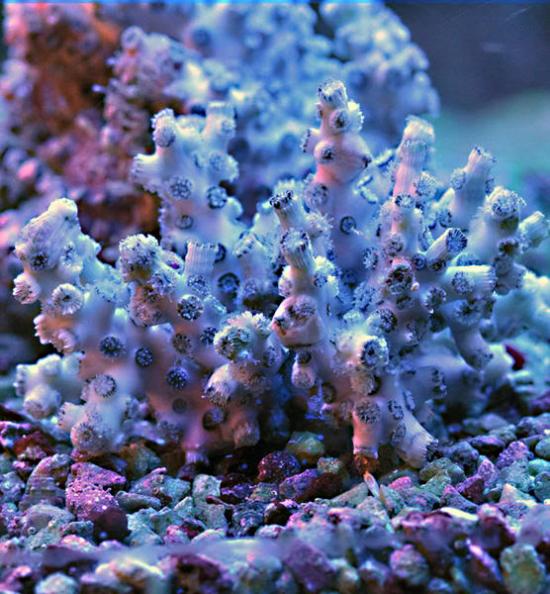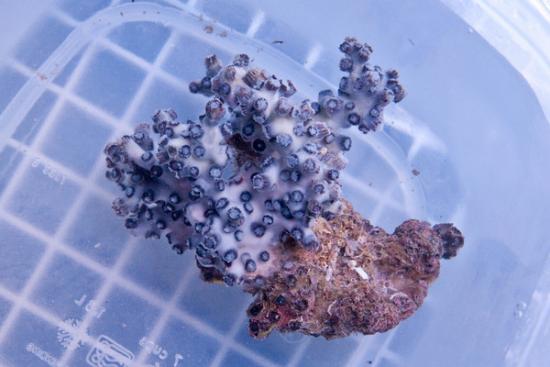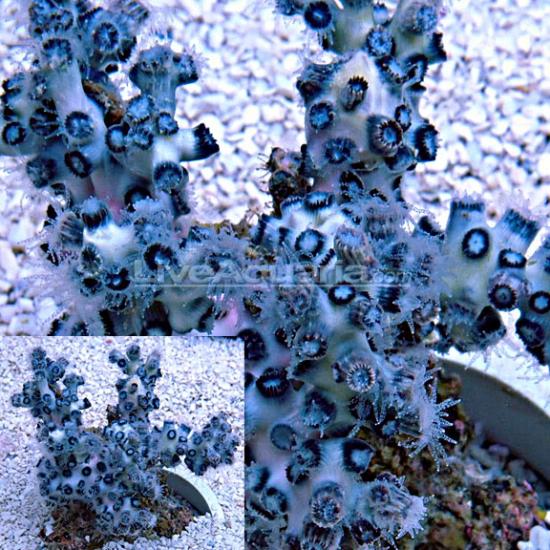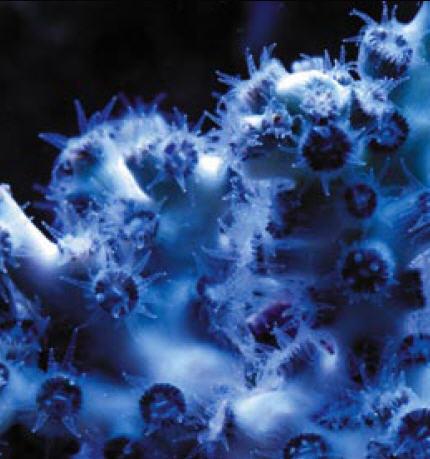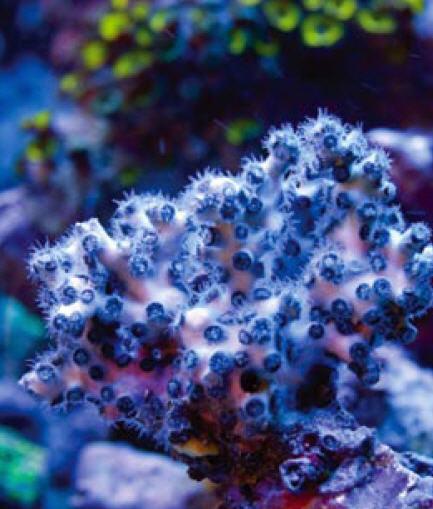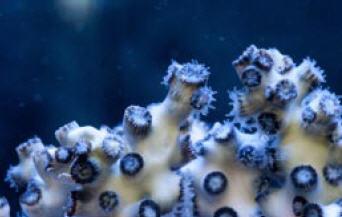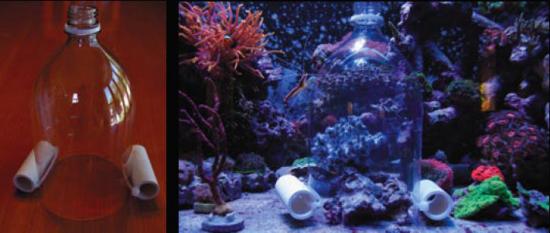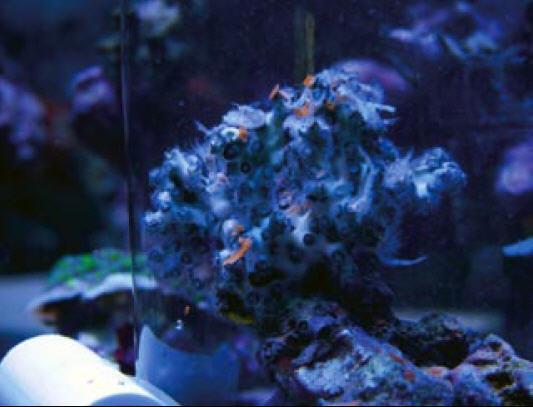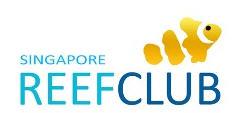-
Posts
11,637 -
Joined
-
Days Won
40
Content Type
Profiles
Forums
Gallery
Everything posted by CFOh
-
Too Bad... this one need to wait until next year July... really like how they elaborate how the earth was made...Can't wait to see..... Ice Age 4 : Continental Drift Official Trailer 2012
-
Space Battleship YAMATO - Trailer [English Sub] 2011 http://www.youtube.com/watch?v=o7RQSdxmMm0
-
RIO Launch Trailer 2011
-

How the seahorse got its shape -- by Nature Video
CFOh replied to CFOh's topic in General Reefkeeping_
Another old article from Reefbuilders by Jake Adams & nationalgeographic.com by Charles Choi about SeaHorse 13 million year old seahorse fossil found in Slovenia The photo above shows a 2.5″ fossil of Hippocampus sarmaticus which was discovered in a streambank in Slovenia. The 13 million year old fossil is one of the oldest ever found and it was closely accompanied by a handful of tiny, inch long baby seahorses. The finds shed some light on the evolution of seahorses and their gregarious nature which is still evident in modern seahorses. The grouping of small seahorses were probably living in a seagrass bed at the time when they were all so neatly fossilized. Follow the link to see additional photos of the fossilized syngnathids. -
keep in office environment, 24 x 7 air cond + Chiller $$$ lol.. condensation is unavoidable...
-
S-shaped seahorses give them greater reach Posted on January 28th, 2011 by Jake Adams (reefbuilders) We’ve never really given much thought as to why seahorses swim upright or why they have S-shaped bodies but that hasn’t stopped curious researchers from teasing out some possible answers. Unlike the streamlined and tubular pipefish, the venerable seahorse is has a curved body shape which allows it to get a greater reach to capture it’s prey. The effect of body curvature on prey capture was recently investigated by a team of researchers studying the ecomorphology of seahorses. By modeling the body shape of seahorses and pipefish and it’s effect on prey capture, scientists from Arizona State university were able to understand that the curved neck and bent head of the seahorse gave it a longer reach and essentially allows the seahorse to sneak up on and eat more of the small shrimp that make up the bulk of it’s diet. The new study on the S shape of seahorses was recently published in the journal Nature Communications, and their website includes a short video explaining the findings in more detail.
-
Another inspiration AZoox tank!!!
-
Batfish Schooling
-
Batfish School @ Maldives
-
Sea pork 'nanowhiskers' may grow human muscle tissue by Becky Crew cosmosmagazine.com Online Tiny whiskers taken from tunicates, commonly known as sea squirts or sea pork, are the latest source of material used in artificial tissue research. Credit: University of Manchester SYDNEY: Tiny ‘nanowhiskers’ derived from sea creatures could help scientists to engineer working human muscle tissue, a new study has found, taking renewable material research to miniscule new levels. According to laboratory tests, cellulose-based whiskers from seabed-dwelling filter feeders called tunicates, commonly known as sea squirts or sea pork, can influence the behaviour of skeletal muscle cells. At several thousand times smaller than muscle cells, these whiskers are the smallest physical feature found to cause cell alignment, and it’s hoped that this discovery will improve regenerative medicine technology in the future. “Other researchers have shown that nanoscale features such as this can induce contact guidance in other cell types but rarely using features smaller than a few tens of nanometers and never before in muscle cells,” said PhD student James Dugan from the University of Manchester in the UK. Influencing the motion of cells The topography of a material surface has important influence on cell behaviour and physiological functions, as they induce a phenomenon known as ‘contact guidance’. It was first proposed by American biologist and anatomist Ross Granville Harrison when he studied cells growing on fibres from a spider's web in the early 20th century, noticing that the topography of the web could influence the direction of the cells’ motion. This phenomenon has enjoyed widespread interest from scientists, engineers and clinicians - especially those in the field of regenerative material and tissue engineering research - as it can not only assist in the construction of a cell population with defined orientation, (for example in nerve, tendon repair and regeneration) and the genesis of normal bone morphology, but it can also be used in controlling the interactions between both natural and synthetic materials and cells or tissues. “This new research gives us an interesting insight into contact guidance in cells, which means they follow a certain direction based on the surface they’re sitting on. Microfibres have already been shown to do this, but these researchers are doing it using tiny dimensions, much smaller than cells, and still seeing changes in the direction,” said Andrea O’Connor from the Department of Chemical and Biomolecular Engineering at the University of Melbourne. Long, thin whiskers ideal By using the cellulose-based nanowhiskers, the University of Manchester researchers were able to take advantage of this material’s unique properties. Cellulose is a polysaccharide – a long chain of sugars joined together – usually found in plants and is the main component of paper and certain textiles such as cotton. “We are interested in finding exciting new applications for cellulose based materials and in particular nanowhiskers. Cellulose is already used in some biomedical applications such as wound dressings but we wanted to find out if the unusual shape of the whiskers could be used to produce specific responses in living cells,” said Dugan. “It's this whisker-like shape that allows us to orientate the whiskers in such a way that leads to contact guidance in the cells that we grow on them,” he said.
-
Seaweed fossils may be Earth's oldest plants by Myles Gough from cosmosmagazine.com Online One of the recovered fossils from Lantian. The specimen is roughly 600 million years old and approximately 4 cm in height. It is seen to resemble modern ‘seaweed’ with a stalk and a crown of tentacle-like structures. SYDNEY: A newly found series of deep-water fossils may push the first structural changes to complex organisms back by more than 20 million years, suggesting that seaweed-like organisms were among Earth’s first multi-cellular creatures, researchers report. The specimens – some of which resemble modern algae and worm-like animals – were recovered from a quiet niche under the sea near what is now Lantian, a small village in Anhui Province of South China, and might provide a more complex understanding around the presence of oxygen in oceans during this period. “The importance of the new discovery is that it represents one of the oldest assemblages of macroscopic, multicellular, and morphological complex eukaryotes,” said study co-author Shuhai Xiao from Virginia Polytechnic Institute and State University in the United States. “There are more species here and they are more complex and larger than what evolved before.” The diversification timeline Prior to these findings, recently published in Nature, the oldest record of multicellular organisms was the Avalon assemblage discovered in 580 million-year-old rocks in Newfoundland, Canada. Both sets of fossils are from the Ediacaran geological period dating from 635 to 542 million years ago, which immediately preceded the Cambrian explosion. According to researchers, the new fossils show a comparable level of diversity and complexity falling into five morphological types that could represent as many as 15 different species. Ice age aftermath brings diversification The fossils were unearthed in rocks that were deposited after a major glaciation period referred to as the ‘snowball Earth event,’ which ended 635 million years ago. This period of the Earth’s history is hypothesised to have lasted for more than 150 million years, and is characterised by repeated and extreme glaciations, in which the planet’s surface was, at various times, covered from pole to pole by a thick sheet of ice. Xiao said the Lantian fossil discovery implies that it is plausible that the diversification of complex eukaryotes – multi-cellular organisms that are visible to the naked eye – may be related to this ice age and its aftermath, which likely included a large increase in the amount of available oxygen. Ocean oxygenation and moving forward A team of palaeontologists excavated the fossils, which were preserved in carbonaceous black shales, which are thin, darkly coloured sedimentary rocks rich in carbon, sulphide and organic material. Once recovered the fossils were imaged and analysed using light microscopy. The exceptional preservation of the Lantian fossils led researchers to conclude they existed in a deep-water environment at the site, however geochemical analyses of the rocks suggest this was an environment void of oxygen.
-
Courtesy of reefbuilders.com, reefcentral.com & liveaquaria.com Scientific Name: Colangia sp. Common Name : West African Colangia and Culicia Coral Combo Rock Care Level: Moderate Temperament: Semi-aggressive Reef Compatible: Yes Lighting: Low Waterflow: Medium to Strong Water Conditions: 72-78° F, dKH 8-12, pH 8.1-8.4, sg 1.023-1.025 Diet: Plankton Eater overview West African red Colangia coral and Culicia coral combo on rock with CITES. For optimum health this non-photosynthetic coral should be target fed several times per week meaty foods such as mysis or brine shrimp.
-
ARCHOHELIA REDIVIVA Courtesy of reefbuilders, reefhobbyistmagazine, liveaquaria. Article & Images By Jason Wong reefhobbyistmagazine Archohelia rediviva is a non-photosynthetic coral which has been collected off the coast of Australia. Much about this coral remains a mystery as it very rarely appears in the hobby. In fact, in the ten plus years that I’ve been keeping reef tanks, I’d never seen or heard of Archohelia rediviva nor any other corals in the Archohelia genus prior to this year. It seems hobbyists are not the only ones in the dark as scientists also can’t seem to agree on the proper name. The original scientific name, “Archohelia rediviva” (discovered by Wells and Alderslade in 1979) was later reclassified as “Petrophyllia rediviva”. Today, both names appear to be synonyms for each other. For simplicity, in this article I’ll simply be calling this coral “Archohelia”. The most similar corals in the hobby to Archohelia rediviva appear to be the branching Galaxea corals. Although also uncommon, retailers sometimes import colonies of Galaxea acrhelia and Galaxea horrescens. These corals belonging to the same family, Oculinidae, have somewhat similar looking corallites, and share the same branching skeletal structure. Archohelia rediviva first appeared in the hobby after being imported from Eastern Australia in early April 2009. Only a handful of small colonies were collected and sold. The retailer maintained the coral for about three weeks prior to offering it for sale. During this time, it was kept in low light and fed lobster eggs and baby brine shrimp three to four times per week. I managed to acquire one of these colonies in May 2009. To my knowledge, only two other smaller colonies were sold after this initial offering. When the coral arrived, I was greeted with a very healthy, 3”x 3”x 3” branching colony. I didn’t dip the coral for fear of hurting it and instead did a very close visual inspection for any pests and then placed the coral in my tank. Archohelia rediviva is a very distinctive coral. Few corals (other than dead or bleached ones) exhibit a pure white or pure black coloration and the Archohelia has both. A stark white branching body contrasts with deep black bands around each corallite. The ###### disks are a blue-gray color. The tentacles are clear with white specks, very reminiscent of some Rhizotrochus corals. The coral branches are medium bodied and not as prone to breaking as the related, thinner branched Galaxea corals. This coral has proven to be a hardy and robust specimen. The tentacles open both during the day, and in the evening, but tend to be most extended in the early morning after a long period of darkness. It’s been kept on the bottom of a 170 gallon display tank in low-medium light under three 250 watt 20,000k metal halide bulbs. Water flow is also low to medium. Over the course of four months, I’ve suffered a few deviations in water chemistry in my tank, notably a temporary spike in salinity and a drop in alkalinity due to equipment failures. While other corals in my tank became irritated, the Archohelia didn’t seem to notice. Although I would certainly never advise on anything less than ideal parameters for this coral, it has proven to be less finicky than others that I have kept. When it comes to care, Archohelia, like all non-photosynthetic corals, needs to be fed regularly. This coral in particular is a very voracious feeder. During the months that I have cared for it, I have been providing a combination of small frozen mysis shrimp, crushed flake food, decapsulated brine shrimp cysts, baby brine shrimp, enriched adult brine, small sinking pellets and Cyclopeeze. I’ve even given it the occasional treat of Japanese sushi tobiko (fish roe). I generally feed the coral a mixture of the above ingredients three times per week although the coral will accept up to two or three feedings a day. Despite an apparent tolerance for poor water quality, failing to feed is a sure fire way to kill this coral. During a ten day business trip, I was unable to provide regular feedings. Upon my return home, polyp extension was noticeably reduced and the coral heads appeared sunken in. Luckily, with resumed feedings, polyp extension was soon back to normal. Although feeding must be done regularly, it is quite easy. Archohelia extends its polyps often and the feeding tentacles are very sticky. I generally use a long stiff plastic tube attached to a turkey baster. This allows me to target feed without actually putting my hands into the water. Since the Archohelia is located at the bottom of my tank, this is a very useful tool to ensure I don’t have to go swimming three times a week! The biggest challenge is harassment from tank mates. Because the coral captures so much food, it’s a prime target for poaching by my fish, shrimps, hermit crabs and serpent stars. To combat this, I’ve developed two techniques for feeding. The first method is distraction. I first feed the fish mysis shrimp by dumping a portion into the tank with the pumps on. This fills the fish up and also serves the secondary purpose of extending the tentacles on all of my corals. Next I shut off the pumps and begin target feeding all of the corals on the opposite side of the tank from the Archohelia. This gets all of the slower moving critters like the serpent stars and hermits as far away from the coral as possible. Finally, I take a crushed up mixture of food and squirt it in a dense cloud all over the Archohelia, making sure to cover all of the branches. Any offending hermits or stars are batted away. After five minutes I turn the pumps back on. The tentacles are sticky enough that it has no problem finishing its meal with full flow on. A second technique which I have recently started to use is a ‘feeding bell’ which covers the coral while it is being fed. I learned about this idea on a message board after reading about other hobbyists who employ the same method for “dendros” and sun corals. The idea is to construct a feeding bell out of a two liter soda bottle to form a barrier between the coral and any would-be poachers. This is easily made by cutting off the bottom third of the bottle and adding weight to the “bell” to keep it sunk. One then places the bell over the coral to be fed and squirts food into the mouth of the bottle. This allows the coral to feed undisturbed from scavengers. After the coral has finished feeding (usually 15 minutes or so) I remove the feeding bell with a string attached to the top. Due to its unique nature and rarity, Archohelia rediviva has been in extremely high demand both from hobbyists and stores. Unfortunately, it seems to be a very slow grower, making propagation difficult. Although the coral remains very healthy and has perhaps encrusted a bit more on the base, in four months I have not noticed any new branches or corallites formed. It’s too bad, because the coral is very easy to frag. Using bone shears, I cleanly snipped off two branches with 10+ heads each. The coral took well to the cutting and within an hour, both frags opened up and were ready to accept food. One frag was donated to a fellow reefer as part of the Bay Area Reefers “Don’t Break The Chain” captive propagation program. The other frag remains in my frag tank. Archohelia rediviva has been a very rewarding coral to keep. For the right reef keeper with the time and patience to regularly target feed, Archohelia, along with other non-photosynthetic corals, offer a very unique addition to the display aquarium.
-
Hi All Thread Close... Thanks for reading... Thanks Sis Ming helping me on this... The FIP pipe workmanship looks great!!..it's just what I wanted. Really appreciated yr help... :ThanxSmiley:
-
-
Fish "Walks" on Beach to Spawn
-
Inspiration...
-
-
Hi, cant attach as in error message upon attachment or dun hv attachment icon at all? if cant attach due error message check your file type beside file size also what is the error message.. If cant find any attachment icon then possible your browser conflicting, try other browser.. Cheers...
-
Mean Girls 2-Official Trailer http://www.youtube.com/watch?v=DWZbiGvz5yE&feature=related
-
Hop - Trailer Another version
-
Hop - Official Trailer 2 [HD] http://www.youtube.com/watch?v=HExP4izD358
-
Heard about keeping fresh and salt water fish together.. How about Birds and Fishes together? I personally dun buy this idea just for sharing ...... Cheers... Below from Practical Fishkeeping Issue 1 January'11 A Parisian designer has come up a bird cage and an aquarium, all in one. The design called 'Duplex' is a new version of a design that the artist came up with in 2007 when the fish was in what equates to a giant cup on top of the bird cage. The new, improved version now has a fish bowl that is moulded so that the fish can swim round where the area where the bird perches. The designer says on her website: "Duplex is an aquarium/cage favouring an improbable encounter between a bird and a fish. The aquarium is thermoformed so as to create a space where the bird can fly at the same visual level as the fish. A surprising encounter that evokes the impossible fusion between the air and the waterworld." The fish bowl has no pump or filter as it is 'an artistic project'. The exhibitors told PFK. "We often use it with real fishes and birds during our exhibitions and fairs and it works well. "There aren’t any filters or pumps associated with the aquarium. We use some oxygen tablets and we replace a third of the water every three days with by using a flexible pipe. For longer use, you can add a pump. There are some specific aquatic plants you can also add if necessary." Published: Nicolette Craig
-
News for seahorse lovers... Below from Practical Fishkeeping Issue 1 January'11 A unique new species of seahorse, Hippocampus paradoxus, has been described from Australia. It differs from all other known seahorses by having no dorsal fin. Instead it has a series of fleshy, fin-like lobes along the dorsal midline of the body and tail. Only one specimen, a female, is known. The fish was collected as long ago as 1995, by scientists researching bryozoans, and had lain in a museum collection ever since, until discovered recently by seahorse specialists examining the collection. The specimen was collected to the south west of Esperance in Western Australia, on the extreme western edge of the Great Australian Bight. Because it was collected during scientific research, some details are available of the site: a coarse substrate of calcareous sand populated by a varied mix of bryozoans, including Adeona, a number of bushy flexible species (Family Catenicellidae), "lace corals" (Phidoloporidae), and a number of sponges. The site lies on the midcontinental shelf at a depth of 102 metres, and is one of numerous "islands" of sponges and bryozoans found on the expanses of rippled sand created by wave action. Interestingly, the putative closest relative of the new species, Hippocampus minotaur, is likewise a small, mid-shelf species from comparable depths but in south-eastern Australia, more than 2000 km away at the opposite end of the Great Australian Bight. The two share features previously considered unique to H. minotaur and are thought to be sister species, but there are clear differences, most obviously the lack of a dorsal fin and the strange fleshy lobes in H. paradoxus. The area between their known distributions has not been well sampled so it is unknown how far the range of each species extends or whether there are other, similar species in between. Although the two species are tiny, they appear not to be closely related to the “pygmy seahorses” (eg. H. bargibanti) of the Indo-West Pacific. The true pygmy seahorses are "abdominal brooders" that lack a typical seahorse caudal pouch and brood their eggs and young within the abdomen, and the group is thought to have split off from the typical seahorses at an early stage. However, in some respects H. minotaur and H. paradox have affinities with both groups. For example, H. minotaur has a brood pouch that is technically caudal but very close to the abdomen, and may be an intermediate state. Unfortunately the single specimen of H. paradoxus is a female and hence throws no light on the brooding habits of the species. The scientific name paradoxus and the suggested common name Paradoxical Seahorse refer to these and other puzzling questions the new species raises. Published: Mary Bailey







